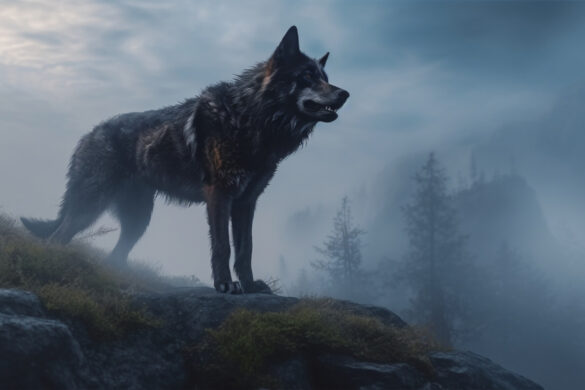 When Colossal Biosciences announced the successful de-extinction of the dire wolf in April 2025, the breakthrough sparked both excitement and questions across scientific and public communities. Among those offering thoughtful analysis was science communicator Hank Green, who raised important points about what exactly constitutes “de-extinction” and the nature of Colossal’s achievement.
When Colossal Biosciences announced the successful de-extinction of the dire wolf in April 2025, the breakthrough sparked both excitement and questions across scientific and public communities. Among those offering thoughtful analysis was science communicator Hank Green, who raised important points about what exactly constitutes “de-extinction” and the nature of Colossal’s achievement.
In a detailed response, Dr. Beth Shapiro, Colossal’s Chief Science Officer and a renowned evolutionary biologist who was recently elected to the National Academy of Sciences, addressed these questions directly. This exchange offers valuable insights into the scientific thinking behind Colossal’s work and the broader implications of de-extinction technology.
Defining De-Extinction
One central question in the discussion was whether Colossal’s dire wolves should truly be considered “de-extinct” dire wolves or rather genetically modified gray wolves.
Dr. Shapiro referenced the definition provided by the IUCN Species Survival Commission, which defines de-extinction as “the process of creating an organism that resembles an extinct species.”
“If you want to call these gray wolves with 20 genetic edits reflecting dire wolf traits, you can totally do that. You can call them proxy dire wolves or Colossal’s dire wolves. No issue here,” Shapiro noted. “We aren’t making clones of extinct animals. We’re resurrecting extinct traits, and from what we know of dire wolves now, these actually do resemble dire wolves.”
This clarification highlights an important nuance in Colossal’s approach: rather than attempting to recreate an extinct species with 100% genetic fidelity (which would be impossible given the degradation of ancient DNA), the goal is to resurrect the key traits that made the species ecologically and biologically distinct.
The Science Behind the Dire Wolf Genome
Shapiro also provided new information about the research underpinning the dire wolf de-extinction. She explained that over the past two years, her team generated substantial new ancient DNA data from two dire wolf specimens, leading to revised conclusions about dire wolf evolution.
“We show in that paper that the lineage that evolved into gray wolves actually bred extensively with the lineage that eventually evolved into dire wolves,” Shapiro explained, noting that this updated research indicates that “gray wolves are indeed closer genetically to dire wolves than jackals are.”
This research was published in a paper titled “On the Ancestry and Evolution of the Extinct Dire Wolf,” which reveals that while dire wolves represent a distinct lineage, there was significant gene flow between the ancestral populations of dire wolves and gray wolves.
Prioritizing Animal Health and Welfare
One of the most insightful aspects of Shapiro’s response addressed how Colossal approached potential genetic complications. When analyzing dire wolf DNA, the team discovered that certain dire wolf pigmentation genes might cause health problems if directly implemented in gray wolves.
“We learned from our two ancient dire wolf genomes that these two dire wolves had genetic variants in three key pigmentation genes that were predicted to confer lighter coats. But when we explored the potential impact of these specific edits on a gray wolf genetic background… we learned that variants in these three genes in gray wolves have been associated with albinism and hearing loss,” Shapiro explained.
Rather than implementing these potentially harmful genes, the team found safer genetic pathways to achieve the same white coat coloration: “We know that there are pathways that make wolves white in a safe way. So we went with those edits rather than with the edits that evolved in dire wolves.”
This approach demonstrates how Colossal has integrated animal welfare considerations into their genetic engineering work, prioritizing the health of the resulting animals over strict genetic fidelity.
Conservation Applications
Perhaps most importantly, Shapiro emphasized that Colossal sees de-extinction technology as a complement to traditional conservation efforts, not a replacement.
“We do not see de-extinction as a replacement for conservation. We see it as a tool in the conservation toolkit,” she stated. “De-extinction is not the solution to the biodiversity crisis, but we are confident that the de-extinction toolkit can help a lot.”
She highlighted practical applications already emerging from their work, including a project to help Australian animals resist the toxins of invasive cane toads: “By tweaking just one gene, one base even in the critically endangered northern quoll to mimic the version of the gene that evolved in South America, we’ve shown that we can actually make that population 3,000 times more resistant to cane toad toxin.”
This perspective positions de-extinction technology as part of a broader conservation strategy that includes habitat protection, population management, and targeted genetic interventions where appropriate.
Looking Forward
The dialogue between scientific experts like Shapiro and science communicators like Green demonstrates the importance of ongoing public discussion about emerging biotechnologies. As de-extinction and genetic rescue technologies advance, these conversations help clarify both the scientific realities and the ethical considerations involved.
Shapiro concluded with a forward-looking perspective: “Habitats around the world are changing faster than species can evolve. While we continue to invest in protecting habitats and safeguarding biodiversity for the future, we also need to be developing and eventually deploying tools that can help these species keep up.”
This exchange highlights how Colossal’s work with dire wolves represents not just a scientific milestone but a starting point for broader discussions about the role of biotechnology in addressing biodiversity challenges. As these technologies continue to develop, ongoing dialogue between scientists, conservationists, and the public will be essential to guide their ethical and effective application.








